Correlation of plasma miR-21 and miR-93 with radiotherapy and chemotherapy efficacy and prognosis in patients with esophageal squamous cell carcinoma
Wen-Tao Wang, Chang-Qing Guo, Guang-Hui Cui, Song Zhao
Abstract BACKGROUND Esophageal squamous cell carcinoma (ESCC) is one of the main causes of human death. It is usually already in middle or advanced stage when diagnosed due to its hidden symptoms in early stage. Therefore, patients have already lost the best surgical timing when diagnosed. Radiotherapy and chemotherapy are standard treatment methods for ESCC clinically, but the efficacy and prognosis of patients from them are still unsatisfactory. Therefore, it is of great clinical significance to seek for biomarkers that can predict the radiotherapy and chemotherapy response and prognosis of ESCC patients.AIM To explore the clinical value of plasma miR-21 and miR-93 in ESCC.METHODS A total of 128 ESCC patients admitted to the First Affiliated Hospital of Zhenzhou University were enrolled as a study group and treated with concurrent radiotherapy and chemotherapy, and other 45 healthy people during the same period were enrolled as a control group. The expression of plasma miR-21 and miR-93 was determined using quantitative real-time polymerase chain reaction,and the correlation of expression of plasma miR-21 and miR-93 with clinical pathological parameters about the patients was analyzed. The receiver operating characteristic (ROC) curve was adopted to assess the diagnostic value of plasma miR-21 and miR-93 for clinical pathological features of ESCC patients, the Logistic regression analysis adopted to analyze the risk factors for radiotherapy and chemotherapy efficacy in ESCC patients, and the Cox regression analysis to
Key words: MiR-21; MiR-93; Esophageal squamous cell carcinoma; Radiotherapy and chemotherapy; Prognosis; Diagnosis
INTRODUCTION
Esophageal carcinoma, a main cause of cancer death, is the eighth most common malignant tumor in human beings, with more than 480 thousand new patients and about 400 thousand deaths for it each year[1]. Esophageal carcinoma is classified into esophageal adenocarcinoma and esophageal squamous cell carcinoma (ESCC) based on its histological type, with 80% of cases being ESCC[2]. Surgery, neoadjuvant chemoradiotherapy, and combined treatment are main therapeutic methods for ESCC in clinic practice, and treatment decision-making for ESCC is made mainly according to TNM staging[3]. Due to the lack of typical clinical manifestations in the early stage,esophageal carcinoma is usually already in advanced stage when diagnosed, and most patients have already suffered distant spread and metastasis, so patients still show a very poor prognosis and non-optimistic survival rate even after treatment of surgery and radiotherapy[4]. Concurrent radiotherapy and chemotherapy are an important therapeutic method for ESCC, but the prognosis of patients after this treatment is quite different due to heterogeneity of the response of different patients to radiotherapy and chemotherapy[5]. The survival rate of patients with esophageal carcinoma has significantly improved with the continuous development of therapeutic regimens, but their 5-year overall survival (OS) is still less than 20%[6].Therefore, it is of great significance to seek for biomarkers that can predict the radiotherapy and chemotherapy response and prognosis of ESCC patients in clinical practice.
MicroRNAs (miRNAs), a group of small single-strand non-coding RNAs, can inhibit mRNA translation or induce mRNA degradation by specifically binding to the 3' untranslated region sequence of mRNA target, thus regulating post-transcriptional gene expression[7]. MiRNAs participate in the progression, proliferation, and metastasis of cancer cells in almost all human cancers including ESCC[8]. MiRNAs are expressed in peripheral blood and tissues. Previous studies have confirmed that miRNAs may become potential biomarkers for diagnosis, treatment, or prognosis of malignant tumors in clinical practice[9,10]. It has been proved that miR-21 is highly expressed in many solid tumors, such as ESCC, oral squamous cell carcinoma, and gastric cancer, so it is considered as a new target for cancer diagnosis or treatment[11].Previous studies pointed out that miR-21 could regulate the invasion, migration, and epithelial-mesenchymal transition of esophageal carcinoma cells[12,13]. A study by Ansariet alfound that ESCC tissues showed significantly higher expression of miR-93 than nonneoplastic tissues[14]. Thus, miR-21 and miR-93 may play roles as tumorpromoting genes in ESCC. However, there are few studies on the roles of plasma miR-21 and miR-93 in predicting radiotherapy and chemotherapy efficacy and prognosis.
This study determined the expression of plasma miR-21 and miR-93 in ESCC patients, and explored their roles in predicting radiotherapy and chemotherapy response and prognosis.
MATERIALS AND METHODS
General materials
A total of 128 ESCC patients admitted to our hospital were enrolled as a study group and treated with concurrent radiotherapy and chemotherapy, and other 45 healthy people during the same period were enrolled as a control group. The study group consisted of 95 males and 33 females between 53 and 79 years old with a mean age of 65.3 ± 8.6 years. The control group consisted of 30 males and 15 females between 49 and 78 years old with a mean age of 63.8 ± 8.3 years. This study, in line with the Declaration of Helsinki, has been approved by the Ethics Committee of the First Affiliated Hospital of Zhenzhou University. The patients and their family members have been informed through telephone or letter, on which they signed an informed consent form.
Inclusion and exclusion criteria
Patients meeting the following criteria were included: Patients confirmed with ESCC based on cytology or histology[15]; patients meeting the 8th edition of staging criteria for esophageal carcinoma released by the American Joint Committee on Cancer and Union for International Cancer Control in 2017[16]; patients without any radical radiotherapy or chemotherapy experience, without contraindication for radiotherapy or chemotherapy, with expected survival time > 3 mo, and with complete clinical data and follow-up data. The following patients were excluded: Patients combined with liver cirrhosis, cardiorespiratory dysfunction, hematologic disease, acute infection,autoimmune diseases, other malignant tumors, or acute and chronic infectious diseases; patients with perforation or hemorrhage indication; and those who cannot tolerate radiotherapy and chemotherapy, rejected the therapeutic regimen of this study, cannot accept periodic follow-up, or withdrew from the study halfway. The inclusion criteria were applicable to the study group, and all subjects in the control group were healthy people.
Therapeutic methods
The ESCC patients were all treated with three-dimensional conformal radiotherapy[17].The preventive exposure area and the area of primary tumor and lymph metastases were given 50 Gy/25f (5-6 wk) and 60 Gy/30f (6-7 wk), respectively. Concurrent chemotherapy was performed to the patients for 2 cycles as follows[18]: The patients were given 80 mg/m2cisplatin (Qilu Pharmaceutical Co., Ltd., China, H37021358)through intravenous drip on the 1st day and the 29th day of radiotherapy, and 500 mg/m2fluorouracil (Shanghai Xudong Haipu Pharmaceutical co., Ltd, China,H31020593) through intravenous drip from the 1st day to 5th day, and from the 29th day to 33rd d of radiotherapy.
Efficacy assessment
The patients were subject to chest computed tomography and barium swallow-based esophageal radiography 3 mo after treatment, and assessed in accordance with the Response Evaluation Criteria in Solid Tumors (RECIST, revision 1.1) as follows[19]:Complete remission (CR) referred to the result that the lesion disappeared completely for 4 wk or more; partial response (PR) referred to the result that the lesion length was reduced by 30% or more for 4 wk or more; progressive disease (PD) referred to the result that a new lesion occurred and the lesion length was increased by 20% or more;and stable disease (SD) referred to the result that the lesion length was shortened or increased by a percentage between that of PR and that of PD. In terms of radiotherapy and chemotherapy efficacy, CR and PR were regarded as effective, and SD and PD were regarded as ineffective.
Determination methods
Elbow venous blood (5 mL) was drawn from all subjects before and after treatment into a vacuum test tube with EDTA-K2, and centrifuged at 820 g for 10 min. The upper plasma (2 mL) was transferred to an Eppendorf (EP) tube and centrifuged at 16000 g for 10 min to precipitate cell debris. Then, the supernatant was saved to a new EP tube at 80 °C for later analysis. The total RNA of the supernatant was extracted according to the instructions of mirVanaTMmiRNA Isolation Kit (Thermo Fisher Scientific-China, AM1561), and the concentration of RNA was determined using a NanoDrop 1000 ultraviolet spectrophotometer (NanoDrop Technologies, Inc.Wilmington, DE, United States). RNA was reversely transcribed into cDNA using the TaqMan MicroRNA Kit (Thermo Fisher Scientific-China, 4366596), and cDNA was taken as a template to carry out polymerase chain reaction (PCR) amplification. U6 was adopted as an internal reference gene. The upstream and downstream primers of miR-21 are 5'-GTTAGCTTATCAGACTGA-3' and 5'-GTGCAGGGTCCGAGGTAT-3',respectively; those of miR-93 are 5'-AGTCTCTGGCTGACTACATCACAG-3' and 5'-CTACTCACAAAACAGGAGTGGAATC-3’, respectively, and those of U6 are 5'-CTCGCTTCGGCAGCACA-3’ and 5'-AACGCTTCACGAATTTGCGT-3’, respectively.The primer sequences were all designed by Shanghai Sangon Biotech Co., Ltd., China.Quantitative determination was performed to miR-21 and miR-93 by real-time PCR on an Applied Biosystems ViiATM 7 system using the miRNA RT-qPCR Detection Kit(Applied Biosystems, Foster City, CA, United States). PCR amplification cycle conditions were: 90 °C for 5 min and 40 cycles of 90 °C for 5 s, 60 °C for 30 s, and 72 °C for 5 s. All samples were repeatedly determined three times, and the results are expressed by 2--ΔCT.
Follow-up
Patients were followed by telephone, visits, and other methods, once every 3 mo, to track the final outcome of patients after treatment. OS refers to the time from the beginning of radiotherapy and chemotherapy to death or the last follow-up.
Statistical analysis
SPSS20.0 (IBM Corp, Armonk, NY, United States) was used for statistical analyses,and Graphpad Prism6 (Graphpad Software, San Diego, CA, United States) was adopted for drawing figures about data in this study. Measurement data are expressed as the mean ± standard deviation (SD). Group comparison about measurement data was performed by the independent-samplesttest, and comparison before and after treatment was performed by the pairedttest. Enumeration data are expressed as the number of cases/percentage [n(%)], and comparison within groups about enumeration data was performed by the chi-square test. The Youden index of receiver operating characteristic (ROC) curves was adopted to assess the diagnostic value of miR-21 and miR-93 for clinicopathological features of ESCC patients. Logistic regression equation and ROC curves were adopted to judge the predictive value of miR-21 combined with miR-94 for assessing radiotherapy and chemotherapy efficacy in ESCC patients, and Logistic regression analysis was adopted to analyze the risk factors for radiotherapy and chemotherapy efficacy in ESCC patients. Kaplan-Meier method was applied to calculate OS, the Log-rank test applied to assess the difference in survival time between groups, and univariate and multivariate Cox regression analyses to identify the prognostic factors for ESCC patients.P< 0.05 indicated a significant difference.
RESULTS
Clinical value of plasma miR-21 and miR-93 for ESCC patients
The study group showed significantly higher relative expression of plasma miR-21 and miR-93 than the control group (bothP< 0.01). Plasma miR-21 and miR-93 were closely related to T stage, N stage, and M stage (P< 0.01), and plasma miR-21 was closely related to pathological differentiation (P< 0.01). ROC curve analysis showed that the area under the ROC curve (AUC) of miR-21 for diagnosing T stage, N stage,M stage, and pathological differentiation of ESCC was 0.819, 0.758, 0.824, and 0.725,respectively, and that of plasma miR-93 for diagnosing T stage, N stage, and M stage of ESCC was 0.827, 0.815, and 0.814, respectively. More details are shown in Figure 1 and Tables 1 and 2.
Predictive value of plasma miR-21 and miR-93 for radiotherapy and chemotherapy efficacy in ESCC patients
The relative expression of plasma miR-21 and miR-93 in ESCC patients after radiotherapy and chemotherapy was significantly lower than that before treatment (P< 0.01). After radiotherapy and chemotherapy, 91 out of the 128 patients got CR or PR,and other 37 patients got SD or PD. The relative expression of plasma miR-21 and miR-93 in patients with an effective response to radiotherapy and chemotherapy was significantly lower than that of patients with an ineffective response to radiotherapy and chemotherapy (P< 0.01). ROC curves of plasma miR-21 and miR-93 for assessing radiotherapy and chemotherapy efficacy in ESCC patients were drawn, and it was showed that the AUC of miR-21 for assessing radiotherapy and chemotherapy efficacy in ESCC patients was 0.811, and the optimal critical value was 5.80; the AUC of miR-93 for it was 0.810, and the optimal critical value was 4.71. Binary Logistic regression analysis was performed further. A Logistic regression model was obtained by taking miR-21 and miR-93 as independent variables: Logit (P) = -10.851 + 0.854 miR-21 + 1.091 miR-93. The AUC of combined miR-21 and miR-93 for assessing radiotherapy and chemotherapy efficacy was 0.894. More details are shown in Table 3 and Figure 2.
Logistic regression analysis of factors affecting radiotherapy and chemotherapy efficacy in ESCC patients
The patients with an effective response to radiotherapy and chemotherapy were compared with those with an ineffective response in clinical data and relevant indexes, and the optimal critical values of miR-21 and miR-93 for assessing radiotherapy and chemotherapy efficacy in ESCC patients were 5.80 and 4.71,respectively. Patients with an effective response to radiotherapy and chemotherapy and those with an ineffective response showed no significant difference in gender,age, history of alcoholism, tumor site, or tumor length, but showed significant differences in smoking history, T stage, N stage, M stage, pathological differentiation,miR-21, and miR-93 (P< 0.05). Multivariate Logistic regression analysis was adopted for factors with significant differences, which revealed that T stage (P< 0.05), M stage(P< 0.05), miR-21 (P< 0.01), and miR-93 (P< 0.05) were independent risk factors for radiotherapy and chemotherapy efficacy, and patients with high T stage, M stage, and high expression of miR-21 (> 5.80) and miR-93 (> 4.71) suffered an increased risk of ineffective radiotherapy and chemotherapy. More details are shown in Tables 4-6.
Correlation of plasma miR-21 and miR-93 before radiotherapy and chemotherapy with 3-year OS of ESCC patients
The 128 ESCC patients were followed successfully for 3 years, and their 3-year OS was 37.50% (48/128). According to the 3-year OS of ESCC patients, ROC curves of miR-21and miR-93 for assessing 3-year OS were drawn. The AUCs of miR-21 and miR-93 for assessing 3-year OS were 0.861 and 0.807, respectively, and their optimal critical values were 5.60 and 3.87, respectively. When the optimal critical values of miR-21(5.60) and miR-93 (3.87) for assessing 3-year OS were taken as cut points, ESCC patients with plasma miR-21 ≤ 5.60 and miR-93 ≤ 3.87 showed a significant difference in 3-year OS (P< 0.05) compared with those with plasma miR-21 > 5.60 and miR-93 >3.87. Multivariate Cox regression analysis revealed that T stage (P< 0.01), N stage (P<0.05), M stage (P< 0.01), miR-21(P< 0.01), and miR-93 (P< 0.01) were all independent prognostic factors for ESCC patients, and patients with high T stage, N stage, and M stage, and high expression of miR-21 (> 5.60) and miR-93 (> 3.87) suffered an increased risk of death in 3 years. More details are shown in Figure 3 and Tables 7 and 8.
DISCUSSION
ESCC shows an increasing incidence in human beings. Its early symptoms are relatively hidden, so most patients are already in middle or advanced stage, and have lost the best chance of surgical resection[20,21]. Radiotherapy and chemotherapy are standard treatment methods for ESCC clinically, but the efficacy and OS of patientsfrom them are still unsatisfactory[22]. Therefore, it is of great significance for treatment and prognosis of ESCC to explore the radiotherapy and chemotherapy efficacy and prognosis, and relevant biomarkers.

Table 1 Diagnostic value of plasma miR-21 and miR-93 for clinicopathological features of esophageal squamous cell carcinoma patients
TNM staging is mostly performed based on postoperative pathologic biopsy, but for patients with an advanced disease, it is sometimes difficult to obtain cancer tissue specimens[23]. Blood miRNAs are easy to sample and determine, and their sampling causes no trauma, so they can be used as non-invasive biomarkers for diagnosis and prognosis of various tumors, with less trauma to patients than pathological biopsy[24,25]. In this study, the ESCC patients showed significantly increased relative expression of plasma miR-21 and miR-93. MiR-21 and miR-93 were closely related to T stage, N stage, and M stage, and miR-21 was closely related to pathological differentiation. ROC curves showed that plasma miR-93 and miR-21 had diagnostic value for these pathological parameters, indicating that miR-93 and miR-21 may become potential molecular markers in clinical diagnosis of ESCC. Clinically,assessments of TNM stage and pathological differentiation are mostly based on histology and imaging[26], so detection of miR-21 and miR-93 is expected to assist the diagnosis of pathological features of ESCC patients. Further study revealed that after radiotherapy and chemotherapy, the expressions of miR-21 and miR-93 significantly decreased, and the AUC of miR-21 combined with miR-93 for assessing radiotherapy and chemotherapy efficacy in ESCC patients was 0.894, indicating that the observed changes of miR-21 and miR-93 could be adopted to predict radiotherapy and chemotherapy efficacy. A study by Kurashige et al[27]revealed that ESCC patients showed highly expressed serum miR-21, and their expression of serum miR-21 was significantly decreased after chemotherapy, which is similar to our study. However,there are few studies on whether miR-21 and miR-93 are related to the radiotherapy and chemotherapy efficacy in ESCC patients. This study revealed that patients with high expression of miR-21 (> 5.80) and miR-93 (> 4.71) suffered an increased risk of ineffective radiotherapy and chemotherapy. Therefore, observation of the expression of miR-21 and miR-93 is helpful to judge the radiotherapy and chemotherapy efficacy in ESCC patients. Previous studies revealed that high expression of plasma miR-23a,related to lymphatic vessel invasion and deep invasion, was an independent risk factor for chemotherapy resistance in ESCC, and overexpression of miR-23a caused obvious drug resistance against 5-fluorouracil and cisplatin in vitro[28]. A study by Komatsu et al[29]pointed out that miR-21 was highly expressed in ESCC patients, and it could be used to predict the chemical resistance of patients. In addition, a study by Fu et al[30]showed that miR-93 could participate in the regulation of chemosensitivity to cisplatin in ovarian cancer through PTEN/Akt signal pathway regulators.According to the above studies and our study, miR-21 and miR-93 may play a key role in the development and chemotherapy resistance of ESCC, but the mechanism is still unclear. A study by Tanaka et al[31]revealed that expression of serum miR-21,significantly up-regulated in ESCC patients, was closely related to neoplasm stage,lymph node metastasis, and inflammatory response. In addition, a study by Li et al[32]confirmed that miR-93 was closely related to clinical stage, lymph node metastasis,and T stage of patients with head and neck squamous cell carcinoma; the patients with high miR-93 expression showed a significantly lower survival rate than those with low expression, and lymph node metastasis was related to a poor prognosis of patients with high miR-93 expression. Therefore, higher expression of miR-21 and miR-93 in ESCC patients may indicate a more serious disease due to high invasion and metastasis of cancer at this time, so patients with high expression of miR-21 and miR-93 suffered an increased risk of ineffective treatment. Finally, we followed the 128 ESCC patients for 3 years, and found that their 3-year OS was 37.50%, which is similar to a previous study[33]. The AUCs of miR-21 and miR-93 for assessing the 3-year OS of ESCC patients were 0.861 and 0.807, respectively, and Cox regression analysis revealed that patients with high T stage, N stage, M stage, and high expression of miR-21 (> 5.60) and miR-93 (> 3.87) suffered an increased risk of death in 3 years, which indicated that detection of miR-21 and miR-93 can be adopted for judging the prognosis of ESCC patients. A study by Komatsu et al[34]revealed that high expression of plasma miR-21 and miR-375 were independent prognostic factors for the 3-year survival rate of ESCC patients undergoing radical esophagectomy,which is similar to our study. Therefore, miR-21 and miR-93 are reliable biomarkers for treatment and prognosis evaluation of ESCC patients, but the regulatory mechanism needs further exploration.
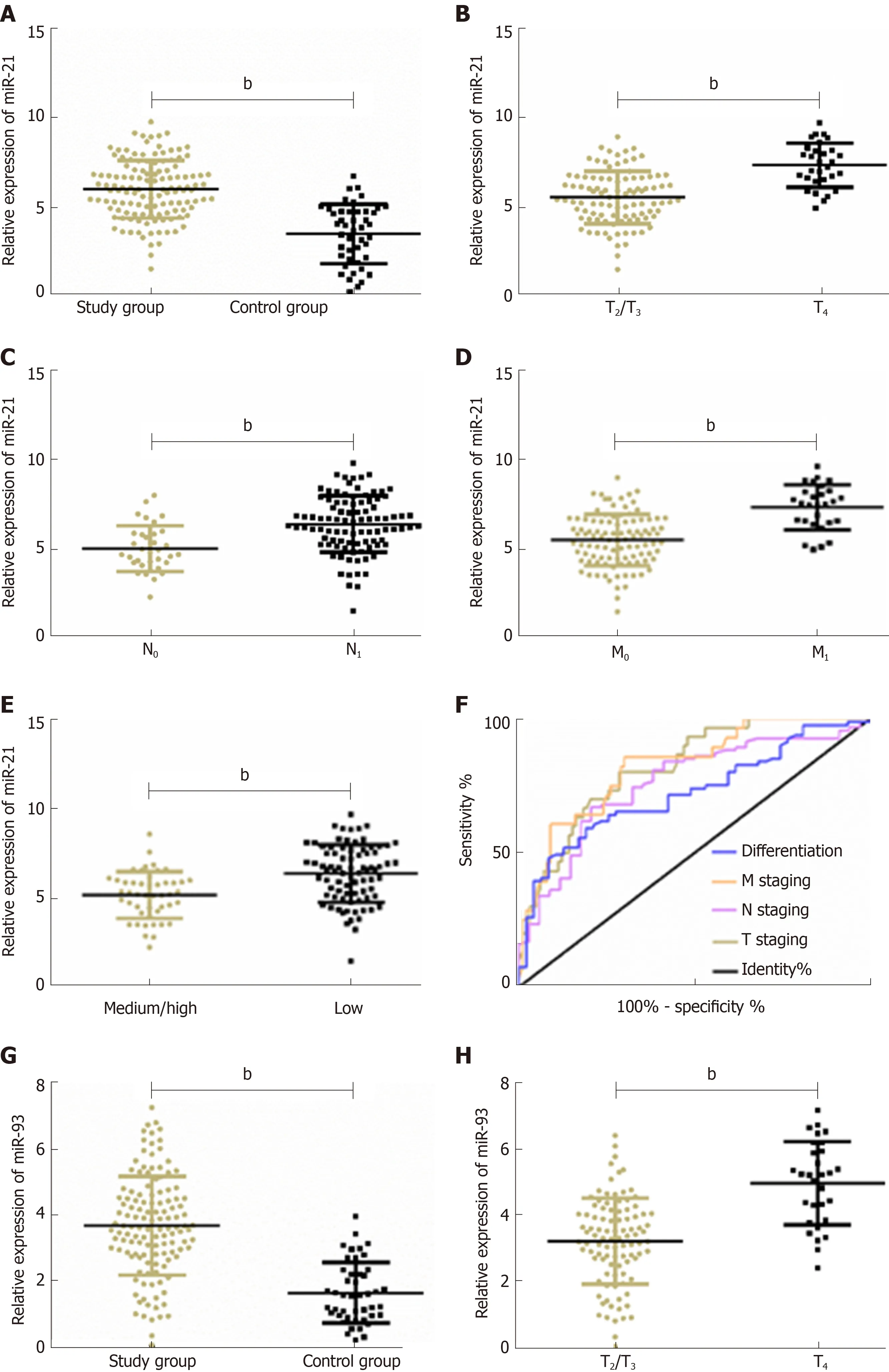
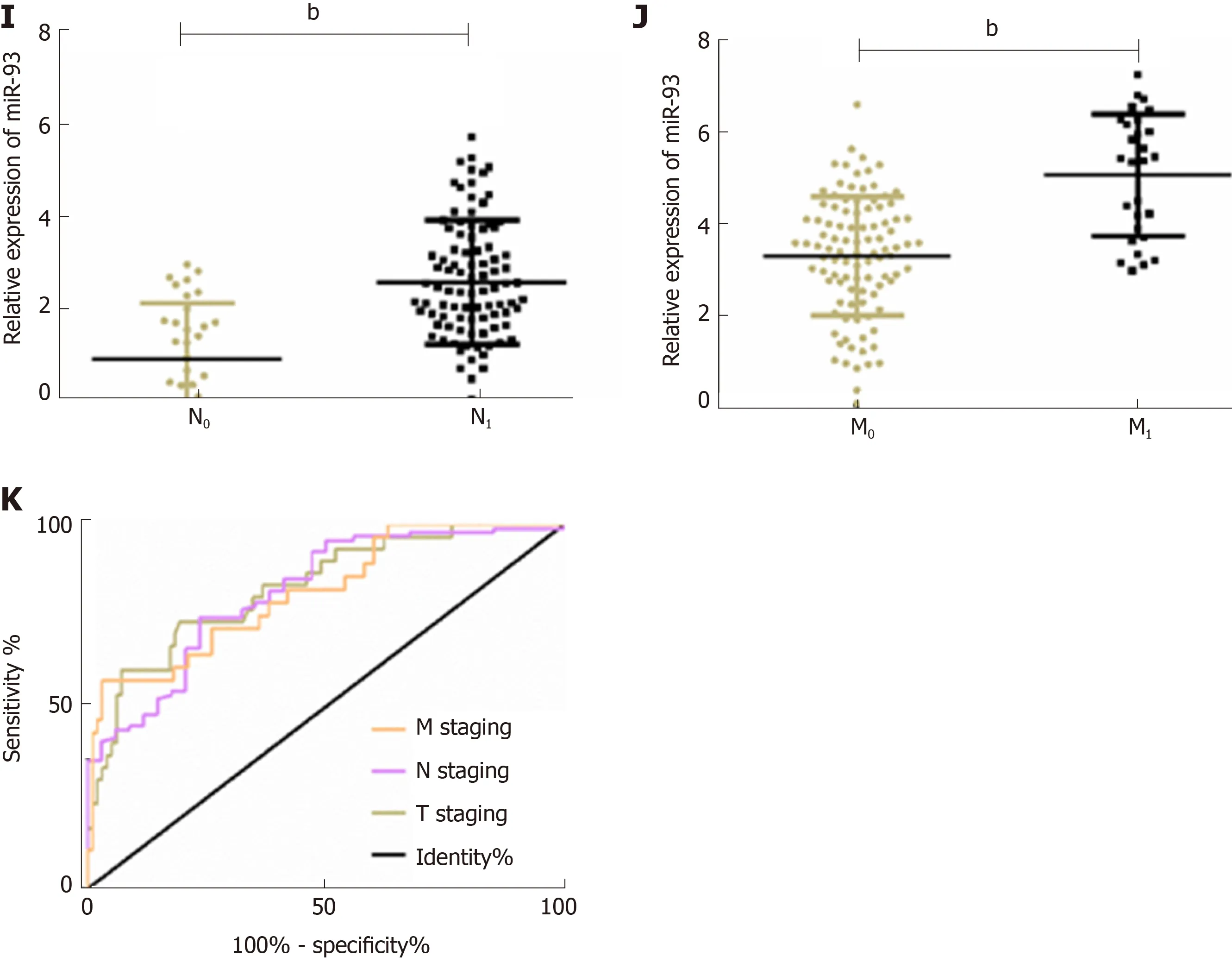
Figure 1 Clinical value of plasma miR-21 and miR-93 for esophageal squamous cell carcinoma patients.
This study has confirmed the roles of plasma miR-21 and miR-93 in radiotherapy and chemotherapy and prognosis of patients, but it still has some deficiencies. First,the correlation of miR-21 and miR-93 with toxic and side effects during chemoradiotherapy has not been observed. Second, the specific regulatory mechanisms of miR-21 and miR-93 in radiotherapy and chemotherapy of ESCC have not been discussed. Finally, the sample size included is small, which may cause selectivity bias, so the sample size needs to be expanded to further support this study.
To sum up, with up-regulated expression in plasma of ESCC patients, miR-21 and miR-93 can be adopted as effective biomarkers for assessing radiotherapy and chemotherapy efficacy and 3-year OS in ESCC patients.
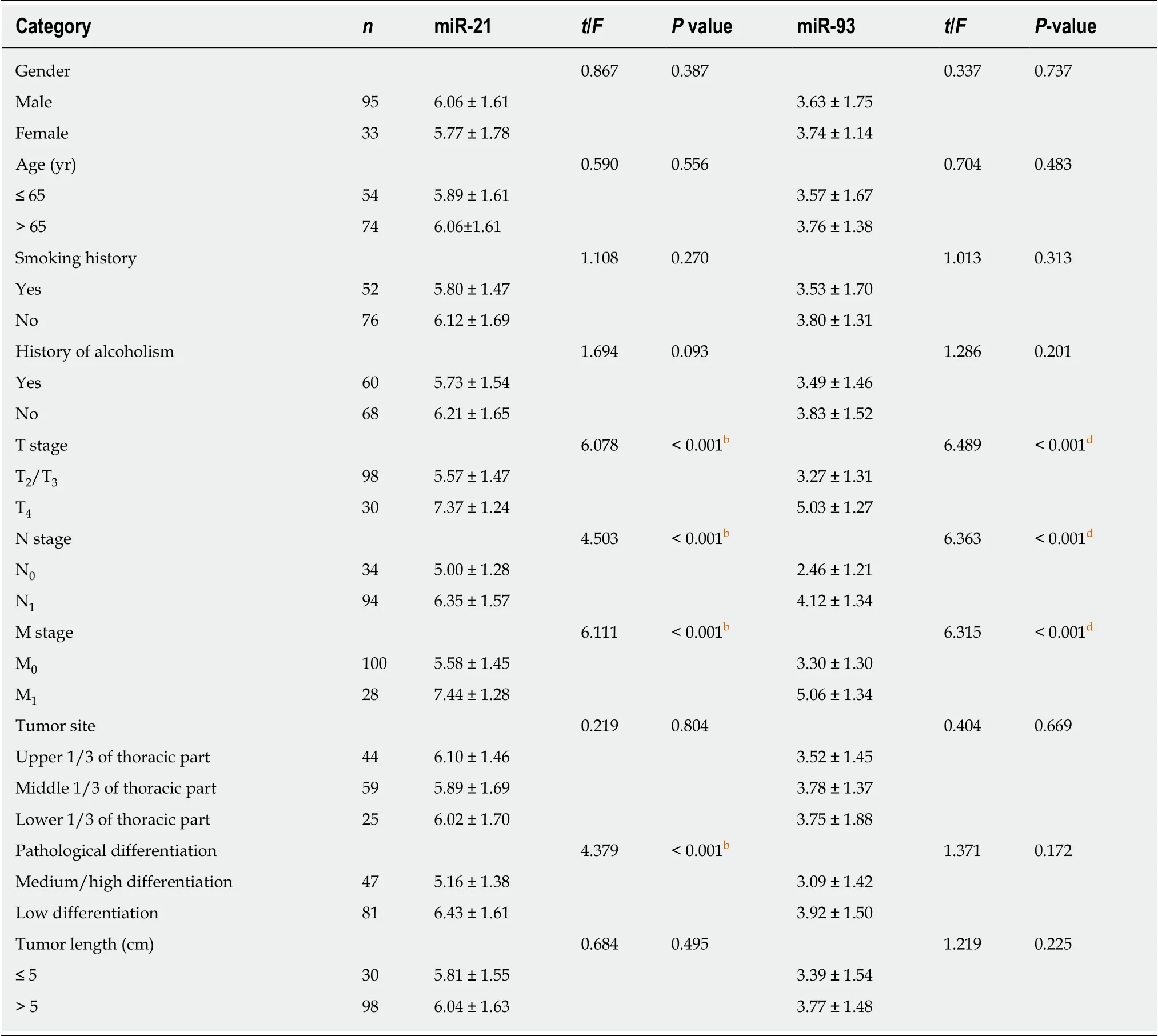
Table 2 Correlation of plasma miR-21 and miR-93 with clinicopathological features of esophageal squamous cell carcinoma patients(mean ± SD)

Table 3 Predictive value of plasma miR-21 and miR-93 for radiotherapy and chemotherapy efficacy in esophageal squamous cell carcinoma patients
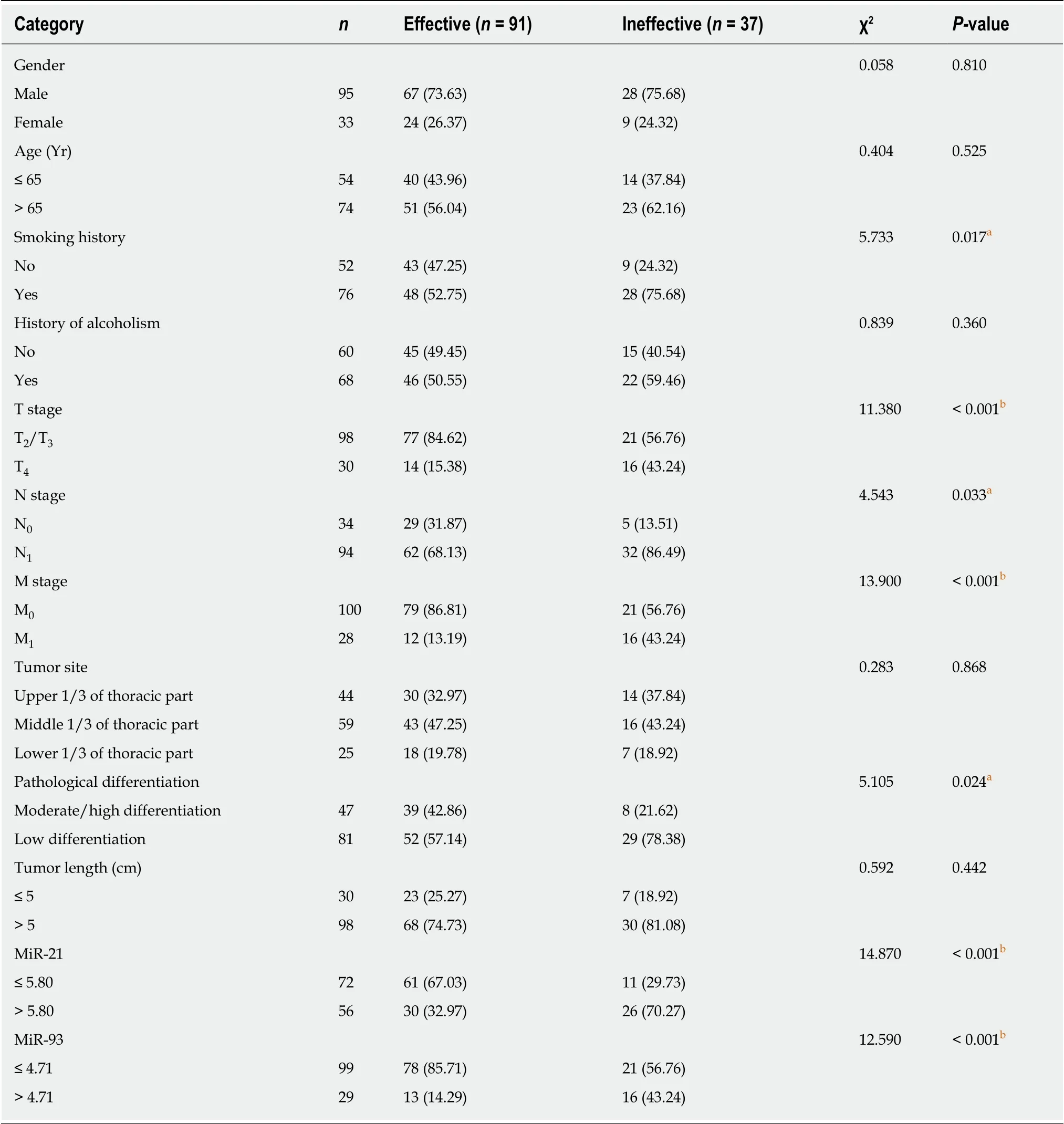
Table 4 Correlation of clinical parameters and indexes of esophageal squamous cell carcinoma patients with radiotherapy and chemotherapy efficacy, n (%)

Table 5 Assignment in logistic multivariate regression analysis

Table 6 Multivariate logistic regression analysis of factors affecting radiotherapy and chemotherapy efficacy in esophageal squamous cell carcinoma patients
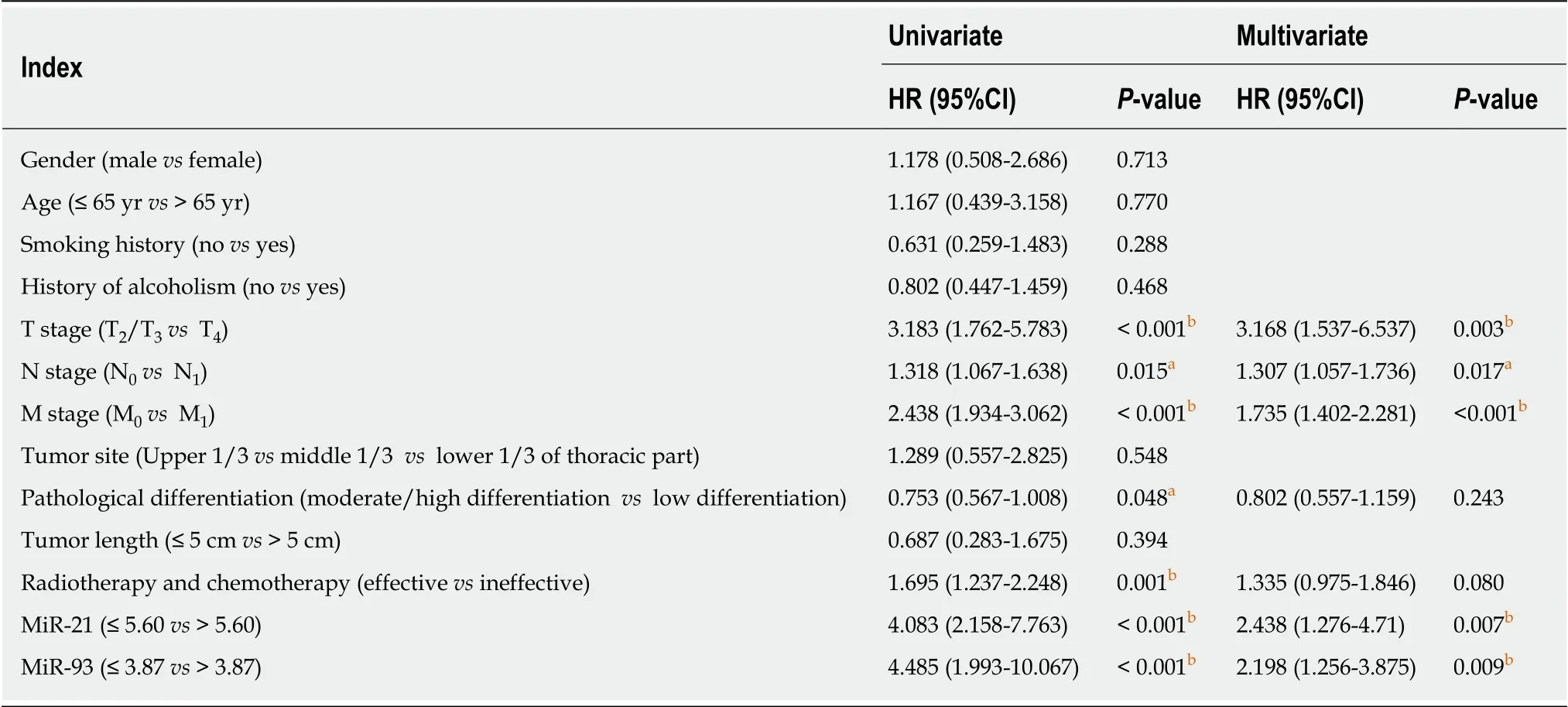
Table 8 Univariate and multivariate Cox regression analyses of factors affecting 3-year overall survival of esophageal squamous cell carcinoma patients
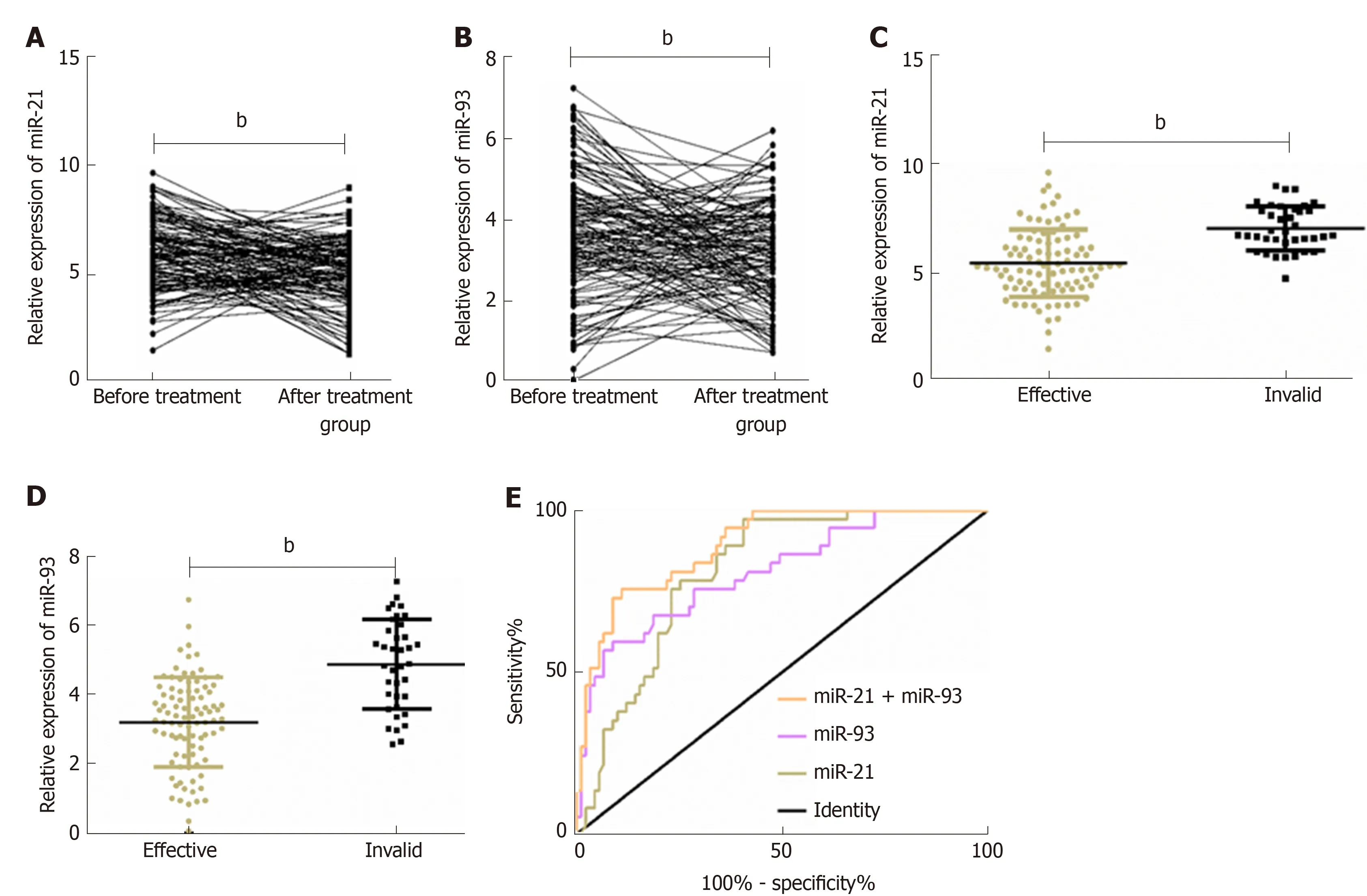
Figure 2 Predictive value of plasma miR-21 and miR-93 for radiotherapy and chemotherapy efficacy in esophageal squamous cell carcinoma patients.
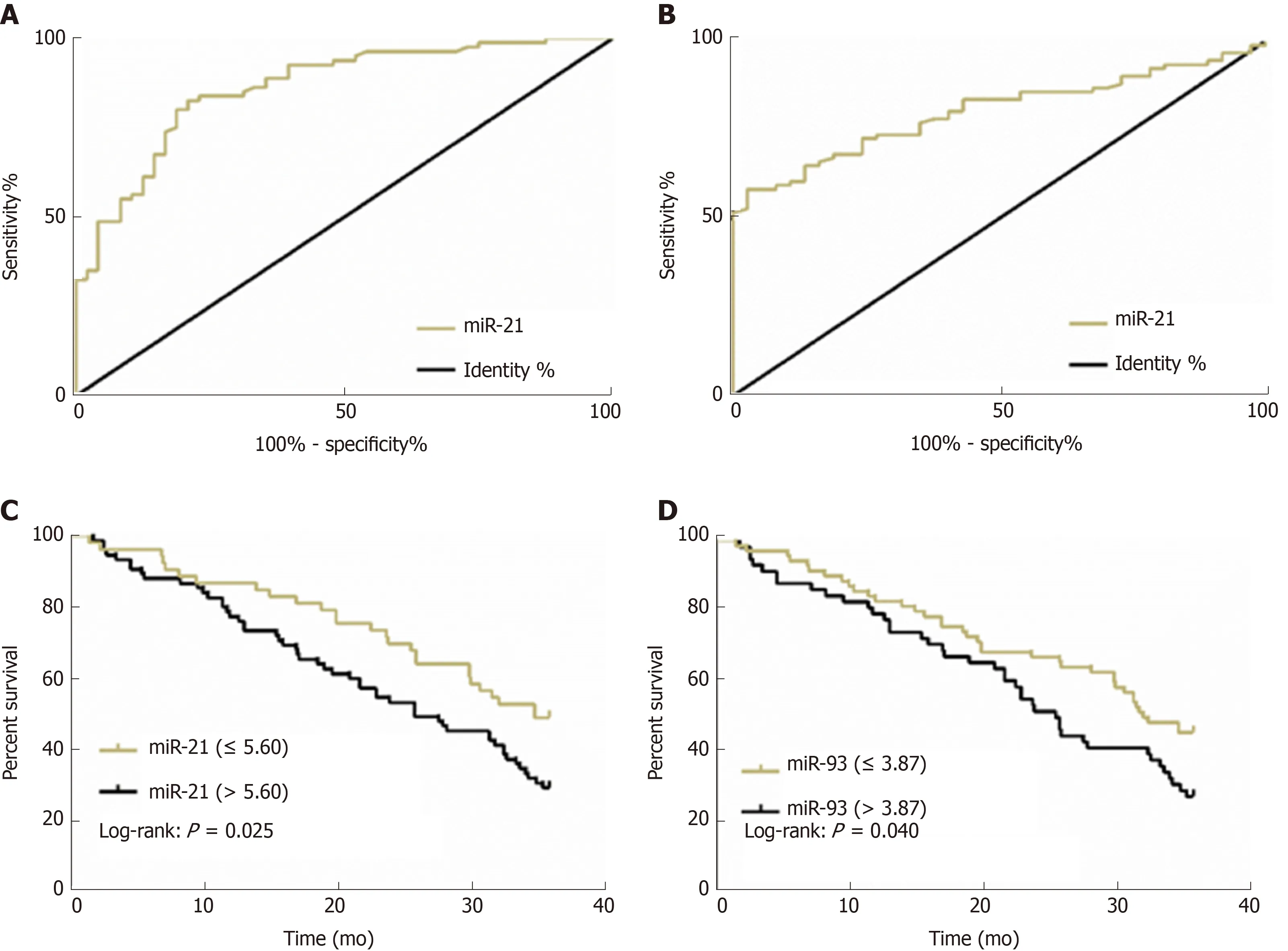
Figure 3 Correlation of plasma miR-21 and miR-93 with 3-yearoverall survival of patients before radiotherapy and chemotherapy.
ARTICLE HIGHLIGHTS
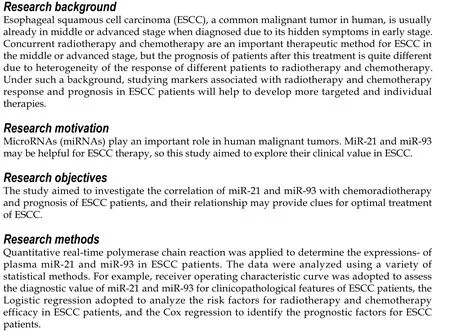
Research results
In this study, it was determined that the expression of miR-21 and miR-93 was significantly upregulated in the plasma of ESCC patients, and they had diagnostic value for pathological characteristics of ESCC patients. In addition, miR-21 and miR-93 were independent risk factors for chemoradiotherapy efficacy, and independent prognostic factors for ESCC patients.
Research conclusions
This study confirmed for the first time that plasma miR-21 and miR-93 have diagnostic value for pathological characteristics of ESCC patients. In addition, ESCC patients with high expressions of miR-21 and miR-93 suffer a high risk of failed radiotherapy and chemotherapy and death in 3 years. These results can provide a theoretical basis for evaluation, treatment, and prognosis of ESCC.
Research perspectives
This study has proved the clinical value of plasma miR-21 and miR-93 in ESCC patients.However, in the future, it is required to perform an in vitro study to observe the drug resistance regulation mechanisms of miR-21 and miR-93 in radiotherapy and chemotherapy of ESCC cells to supplement this study. The mechanisms may be important for the treatment of ESCC patients.In addition, this study has only included 128 ESCC patients, so the sample size needs to be expanded further to verify the conclusions.
ACKNOWLEDGEMENTS
We would like to express our gratitude to the participants in the study.
 World Journal of Gastroenterology2019年37期
World Journal of Gastroenterology2019年37期
- World Journal of Gastroenterology的其它文章
- Is total laparoscopic pancreaticoduodenectomy superior to open procedure? A meta-analysis
- Is there an association between Helicobacter pylori infection and irritable bowel syndrome? A meta-analysis
- Long-term outcomes of hepatocellular carcinoma that underwent chemoembolization for bridging or downstaging
- Nonalcoholic fatty liver disease in patients with inflammatory bowel disease: Beyond the natural history
- Soluble mannose receptor as a predictor of prognosis of hepatitis B virus-related acute-on-chronic liver failure
- Estimating survival benefit of adjuvant therapy based on a Bayesian network prediction model in curatively resected advanced gallbladder adenocarcinoma
